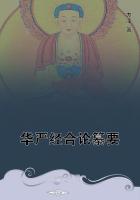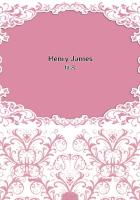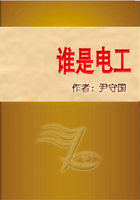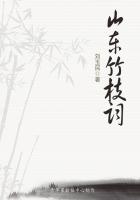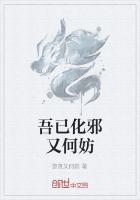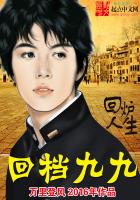I was never taken, caught up into an atmosphere, in Kom Ombos. I examined it with interest, but I did not feel a spell. Its grandeur is great, but it did not affect me as did the grandeur of Karnak. Its nobility cannot be questioned, but I did not stilly rejoice in it, as in the nobility of Luxor, or the free splendor of the Ramesseum.
The oldest thing at Kom Ombos is a gateway of sandstone placed there by Thothmes III. as a tribute to Sebek. The great temple is of a warm- brown color, a very rich and particularly beautiful brown, that soothes and almost comforts the eyes that have been for many days boldly assaulted by the sun. Upon the terrace platform above the river you face a low and ruined wall, on which there are some lively reliefs, beyond which is a large, open court containing a quantity of stunted, once big columns standing on big bases. Immediately before you the temple towers up, very gigantic, very majestic, with a stone pavement, walls on which still remain some traces of paintings, and really grand columns, enormous in size and in good formation. There are fine architraves, and some bits of roofing, but the greater part is open to the air. Through a doorway is a second hall containing columns much less noble, and beyond this one walks in ruin, among crumbled or partly destroyed chambers, broken statues, become mere slabs of granite and fallen blocks of stone. At the end is a wall, with a pavement bordering it, and a row of chambers that look like monkish cells, closed by small doors. At Kom Ombos there are two sanctuaries, one dedicated to Sebek, the other to Heru-ur, or Haroeris, a form of Horus in Egyptian called "the Elder," which was worshipped with Sebek here by the admirers of crocodiles. Each of them contains a pedestal of granite upon which once rested a sacred bark bearing an image of the deity.
There are some fine reliefs scattered through these mighty ruins, showing Sebek with the head of a crocodile, Heru-ur with the head of a hawk so characteristic of Horus, and one strange animal which has no fewer than four heads, apparently meant for the heads of lions. One relief which I specially noticed for its life, its charming vivacity, and its almost amusing fidelity to details unchanged to-day, depicts a number of ducks in full flight near a mass of lotus-flowers. I remembered it one day in the Fayum, so intimately associated with Sebek, when I rode twenty miles out from camp on a dromedary to the end of the great lake of Kurun, where the sand wastes of the Libyan desert stretch to the pale and waveless waters which, that day, looked curiously desolate and even sinister under a low, grey sky. Beyond the wiry tamarisk-bushes, which grow far out from the shore, thousands upon thousands of wild duck were floating as far as the eyes could see. We took a strange native boat, manned by two half-naked fishermen, and were rowed with big, broad-bladed oars out upon the silent flood that the silent desert surrounded. But the duck were too wary ever to let us get within range of them. As we drew gently near, they rose in black throngs, and skimmed low into the distance of the wintry landscape, trailing their legs behind them, like the duck on the wall of Kom Ombos. There was no duck for dinner in camp that night, and the cook was inconsolable. But I had seen a relief come to life, and surmounted my disappointment.
Kom Ombos and Edfu, the two houses of the lovers and haters of crocodiles, or at least of the lovers and the haters of their worship, I shall always think of them together, because I drifted on the /Loulia/ from one to the other, and saw no interesting temple between them and because their personalities are as opposed as were, centuries ago, the tenets of those who adored within them. The Egyptians of old were devoted to the hunting of crocodiles, which once abounded in the reaches of the Nile between Assuan and Luxor, and also much lower down. But I believe that no reliefs, or paintings, of this sport are to be found upon the walls of the temples and the tombs. The fear of Sebek, perhaps, prevailed even over the dwellers about the temple of Edfu. Yet how could fear of any crocodile god infect the souls of those who were privileged to worship in such a temple, or even reverently to stand under the colonnade within the door? As well, perhaps, one might ask how men could be inspired to raise such a perfect building to a deity with the face of a hawk? But Horus was not the god of crocodiles, but a god of the sun. And his power to inspire men must have been vast; for the greatest concentration in stone in Egypt, and, I suppose, in the whole world, the Sphinx, as De Rouge proved by an inscription at Edfu, was a representation of Horus transformed to conquer Typhon. The Sphinx and Edfu! For such marvels we ought to bless the hawk-headed god. And if we forget the hawk, which one meets so perpetually upon the walls of tombs and temples, and identify Horus rather with the Greek Apollo, the yellow-haired god of the sun, driving "westerly all day in his flaming chariot," and shooting his golden arrows at the happy world beneath, we can be at peace with those dead Egyptians. For every pilgrim who goes to Edfu to-day is surely a worshipper of the solar aspect of Horus. As long as the world lasts there will be sun-worshippers. Every brown man upon the Nile is one, and every good American who crosses the ocean and comes at last into the sombre wonder of Edfu, and I was one upon the deck of the /Loulia/.
And we all worship as yet in the dark, as in the exquisite dark, like faith, of the Holy of Holies of Horus.


